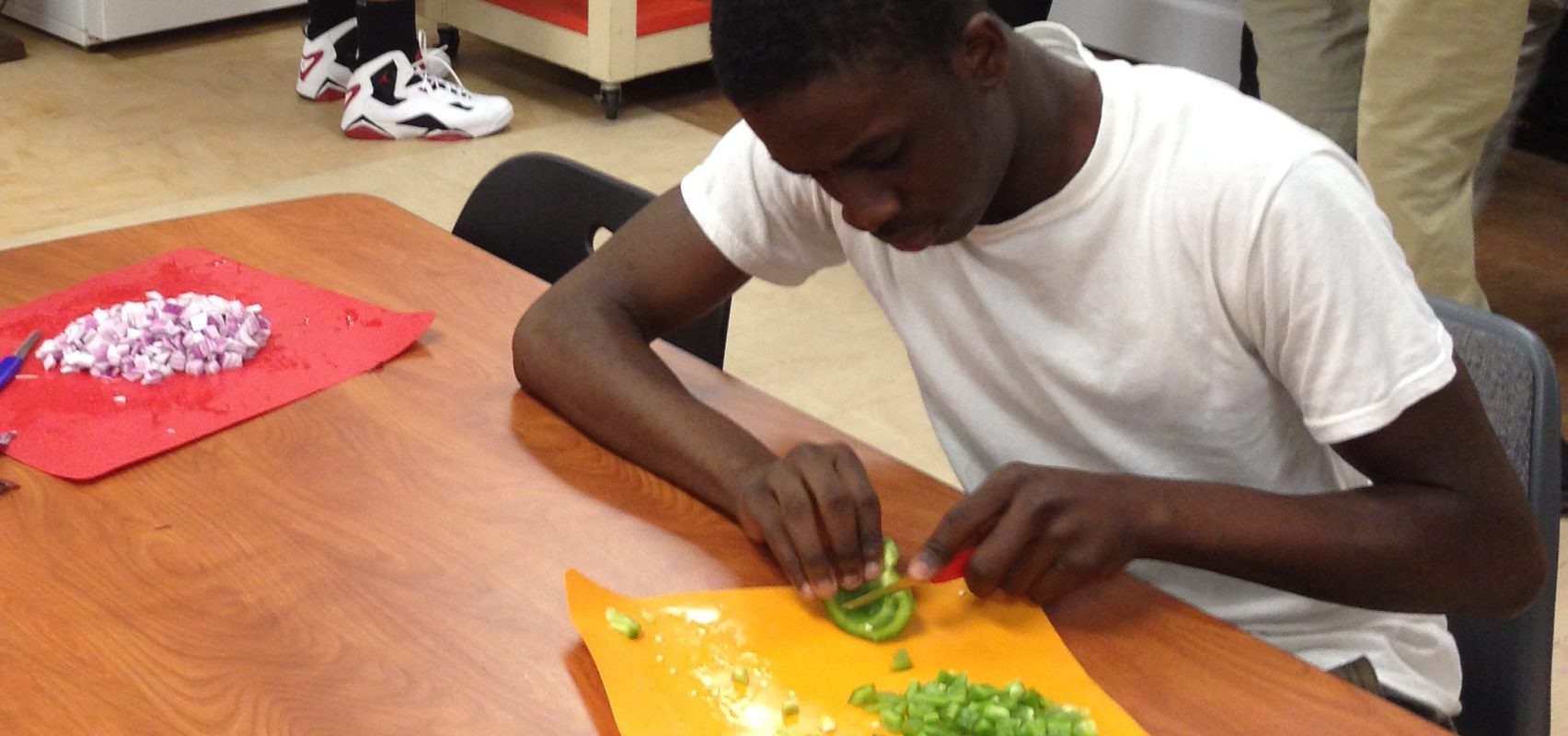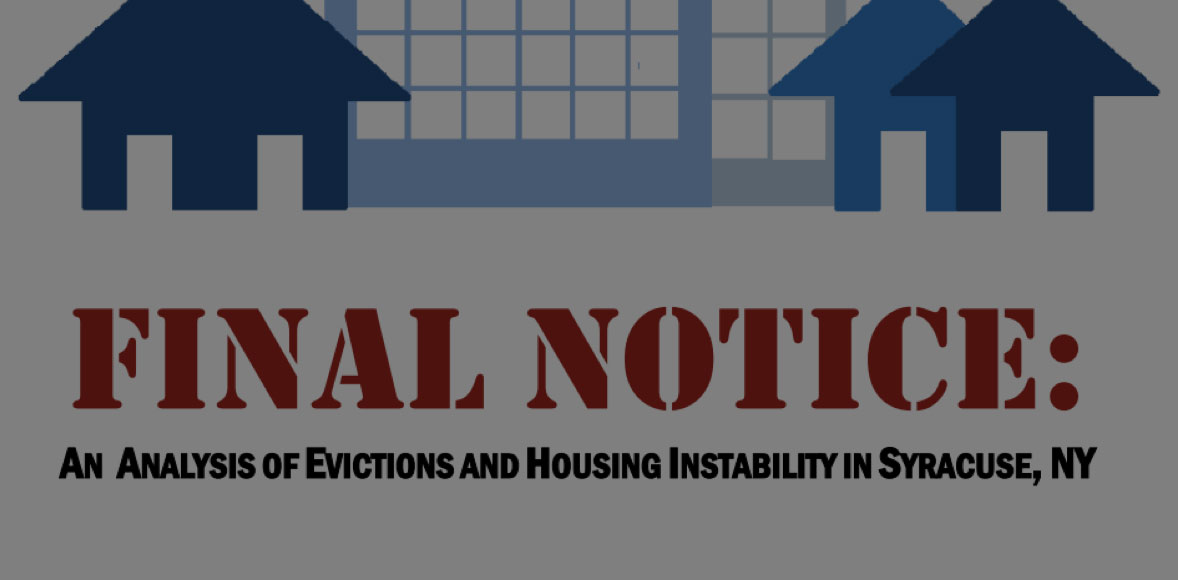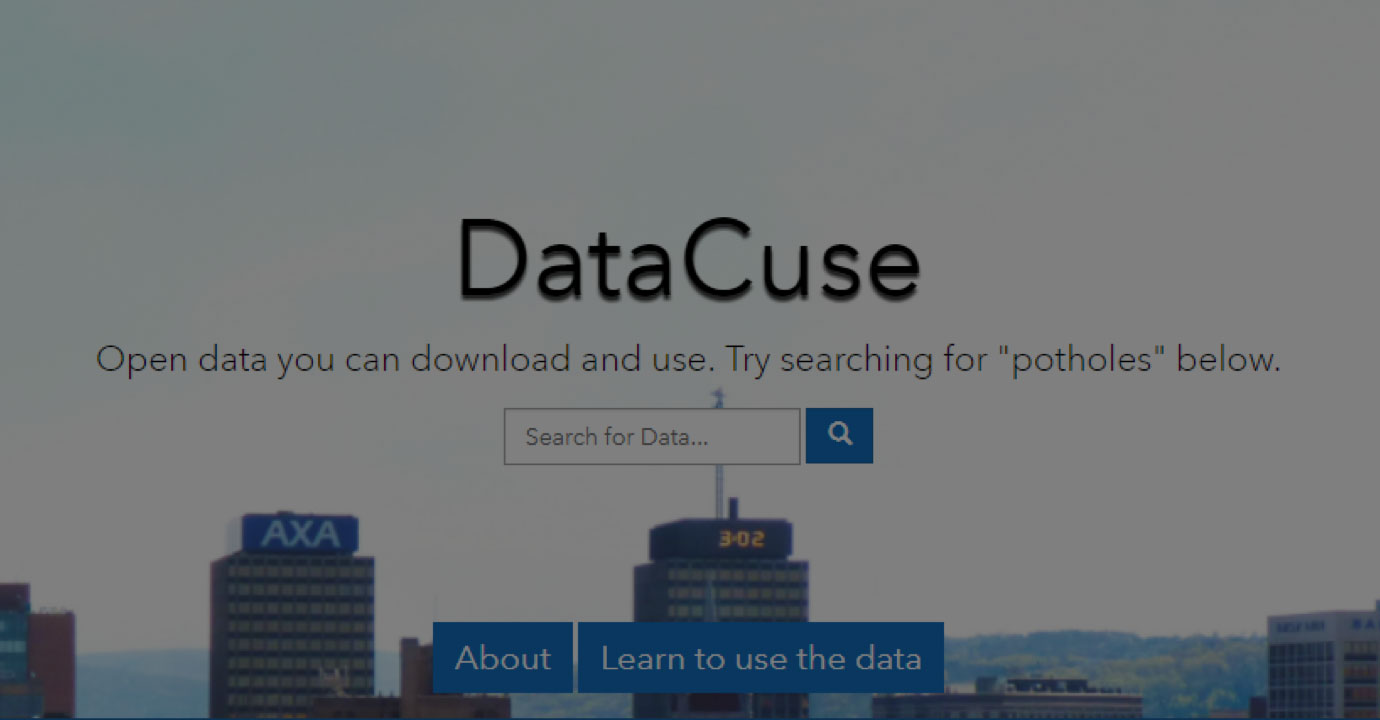
Each week during the school year, children aged 10 to 14 gather at Syracuse Academy of Science High School to take part in Saturday Academy, an innovative program run by the 100 Black Men of Syracuse. The students receive lessons and take part in fun activities designed to help them do better in school, learn leadership skills and feel empowered. Now, the students are also learning healthy food and nutrition habits and developing a love of cooking through a new health and wellness initiative.
The lessons can vary, but all are designed to address the health needs of local residents, especially those that disproportionately affect minorities. One recent class focused on healthy drink alternatives such as switching out Gatorade and soda for healthier options. The lesson then turned to safe cooking. As a finale, the students prepared a meal for everyone at the Academy.
“We work on educating young people, from learning how to read food labels to going on bus trips to farms and the regional market,” said Ryan Beauford, 100 Black Men’s vice president of operations. “There they can see that milk doesn’t just show up in the refrigerator at the supermarket; there’s a supply chain.”
100 Black Men chose to implement the new lessons into its Saturday Academy because physical and mental health can significantly impact a child’s education. When children grow up with a lack of available healthy food, high rates of obesity tend to follow, which can lead to diseases like diabetes, asthma and cardiovascular disease. According to the Association of Black Foundation Executives’ health and wellness report, black children have absenteeism rates three times higher than the rate of their peers, thus greatly affecting their learning and potential achievement.
According to CNY Vitals, over 16 percent of children and adolescents in Onondaga County were obese in 2012. In the Syracuse City School District specifically, 23.7 percent of students were obese, higher than the 17.3 percent New York State average.
100 Black of Men received a grant from the Central New York Community Foundation to implement its new health and wellness program. Since its launch, it has surpassed its targeted attendance numbers. To deliver the comprehensive lessons, the organization partners with the Cornell Cooperative Extension’s SNAP-Ed program, which is one of the nutrition education and events administers of the Eat Smart New York campaign.
Since 2006, 100 Black Men of Syracuse has focused on mentorship and empowerment in the Syracuse community. In addition to its health and wellness program, 100 Black Men also offers SAT prep classes, historically black college and university tours, economic empowerment workshops and an annual walk for wellness and stroke prevention.
Charles Anderson, chairman of 100 Black Men’s Health and Wellness Committee, stressed the importance of talking about both physical and mental health issues: “When people know about the resources available to them, they can be healthier and feel a better sense of community.”
He says that if children are more aware of what’s healthy, they can have a positive impact on their parents. “We are reaching out to the community as a whole so that children and adults can get the information and pass it on to others, be it family or otherwise.”
To learn more about 100 Black Men of Syracuse, visit 100blackmensyr.org.





Recent Comments